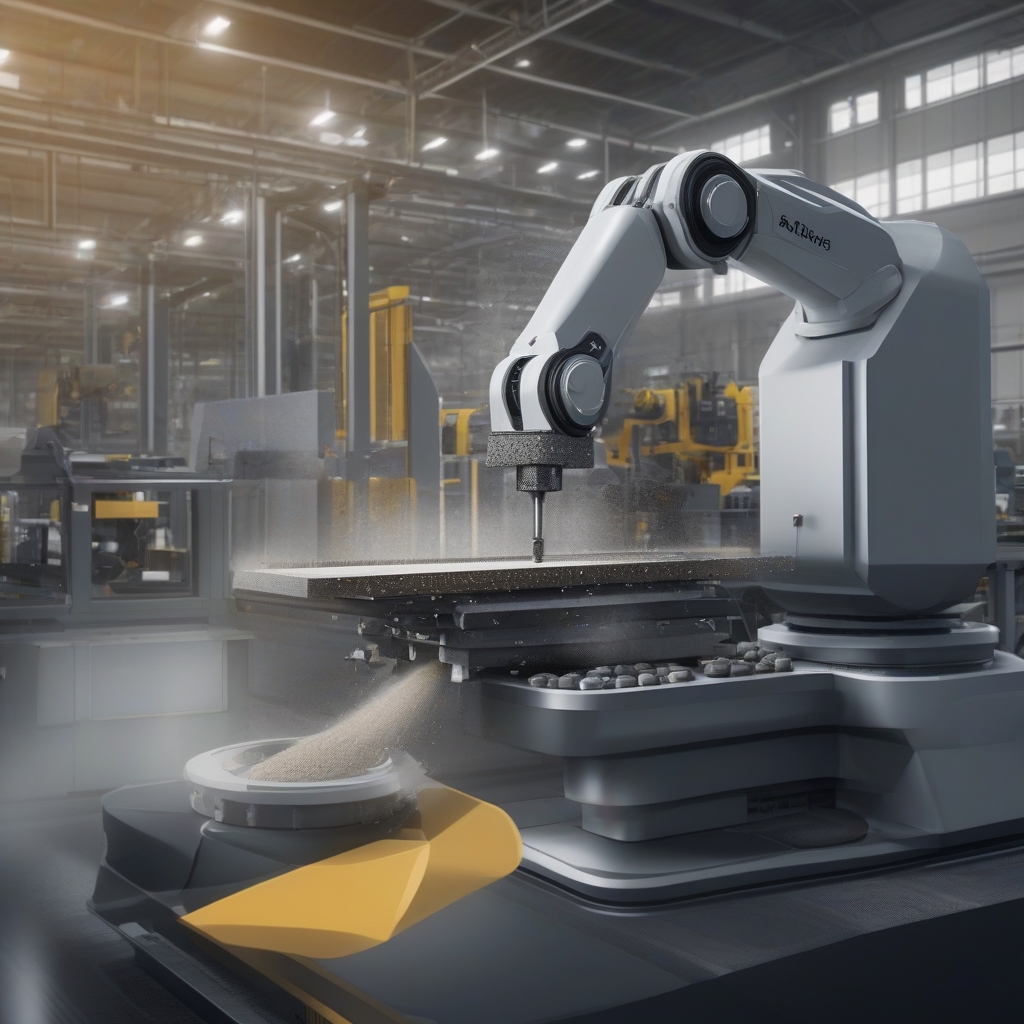Introduction to the Abrasives Market
In recent years, the abrasives market has seen significant developments fueled by technological advancements. With **automation and artificial intelligence** (AI) beginning to reshape traditional manufacturing industries, the abrasives market stands out as a key beneficiary. These technological enhancements have not only boosted productivity but have also instigated innovative ways to improve the quality and efficiency of abrasive materials.
In this article, we delve into the impactful trends of automation and AI in the abrasives market, exploring how these technologies are molding the future of the industry.
The Evolution of Automation in Abrasives
Automation within the abrasives industry has emerged predominantly in response to the increasing demand for efficiency and precision. This section explores some of the notable advancements:
1. Robotic Precision and Efficiency
The introduction of **robotic automation** has led to substantial improvements in manufacturing processes. Robots are employed for precise cutting, grinding, and polishing tasks which were once labor-intensive and prone to human error. **Key benefits** include:
- Consistency: Robots ensure uniformity across production, enhancing product quality.
- Speed: Automated systems can operate continuously without fatigue, significantly speeding up production.
- Safety: By taking over potentially hazardous tasks, robots ensure a safer working environment for human workers.
2. Advanced Machinery and Factory Automation
Automated machinery has taken center stage in the abrasives market, characterized by:
- Computer Numeric Control (CNC) machines: These machines allow for highly precise and automated abrasive processing.
- Integrated Digital Control Systems: Machinery guided by digital interfaces enables streamlined operations, reducing the need for manual oversight.
- Smart Factories: Featuring interconnected devices that enable real-time data collection and process optimizations.
AI’s Role in Revolutionizing the Abrasives Market
Artificial Intelligence introduces a new dimension to abrasives production by enhancing decision-making through data analysis and machine learning.
1. Predictive Maintenance and Operational Efficiency
AI-driven solutions offer **predictive maintenance**, which minimizes downtime through:
- Data Monitoring: AI systems continuously monitor machinery for performance anomalies, allowing preemptive maintenance actions.
- Reduced Costs: Proactive maintenance reduces the likelihood of unexpected machinery failures.
- Enhanced Lifespan: Regular maintenance dictated by AI insights can extend the life of expensive machinery components.
2. Machine Learning for Quality Optimization
Machine learning algorithms are transforming how abrasives are made by:
- Process Optimization: AI can analyze various production parameters to suggest optimal settings for improved quality and reduced waste.
- Error Detection: Automated quality assurance that detects and corrects defects swiftly, maintaining high standards for abrasive products.
- Supply Chain Improvements: AI analyzes supply chain data for efficiencies, reducing material waste and costs while ensuring timely delivery.
Integration of Humans and Technology
One of the most compelling aspects of automation and AI is their potential for collaboration with human workers. The **integration of human expertise and machine precision** offers surprising synergies:
1. Augmented Workforce
Humans and machines work best together, with AI and robots taking over repetitive tasks, allowing human workers to focus on:
- Complex Problem Solving: Humans can devote more time to higher-order tasks that require creativity and decision-making.
- Skill Development: Workers can train on controlling and interacting with sophisticated machinery, acquiring valuable new skills.
- Safety Oversight: Human personnel oversee and manage production environments, ensuring machine performance aligns with safety protocols.
2. Embracing Change
The transition towards automation and AI doesn’t imply the obsolescence of human roles but rather a redefinition:
- Training Programs: Companies are investing in training current employees to work with new technologies.
- Enhanced Roles: Workers can transition into roles that require oversight of automated systems.
- Collaborative Innovation: Human insight continues to play a crucial role in innovating within the industry.
Challenges and Future Prospects
While opportunities abound, the path of automation and AI in the abrasives market is not without challenges:
- Initial Investments: High upfront costs in technology and training can be barriers for smaller enterprises.
- Cultural Shift: Organizations must foster a culture that embraces technological change.
- Cybersecurity: With increased connectivity comes the challenge of securing factory systems against cyber threats.
Despite these challenges, the future of the abrasives market looks promising. **Automation and AI are paving the way for innovations** that will continue to redefine productivity and quality standards, ensuring that the industry remains competitive and resilient.
Conclusion
The integration of **automation and AI into the abrasives market** is more than a mere trend; it is a fundamental shift towards a more efficient and innovative future. As the industry embraces these technologies, it unveils new potential not only for enhancing product quality and efficiency but also for reimagining the role of human workers.
Companies willing to invest in and adopt these technologies will undoubtedly find themselves at the forefront of this digital revolution, poised to take advantage of the growing demand for high-quality abrasives in various industries globally. As we move forward, such advancements will continue to shape the future of the abrasives market, driving it towards heights hitherto unexplored.

Leave a Reply